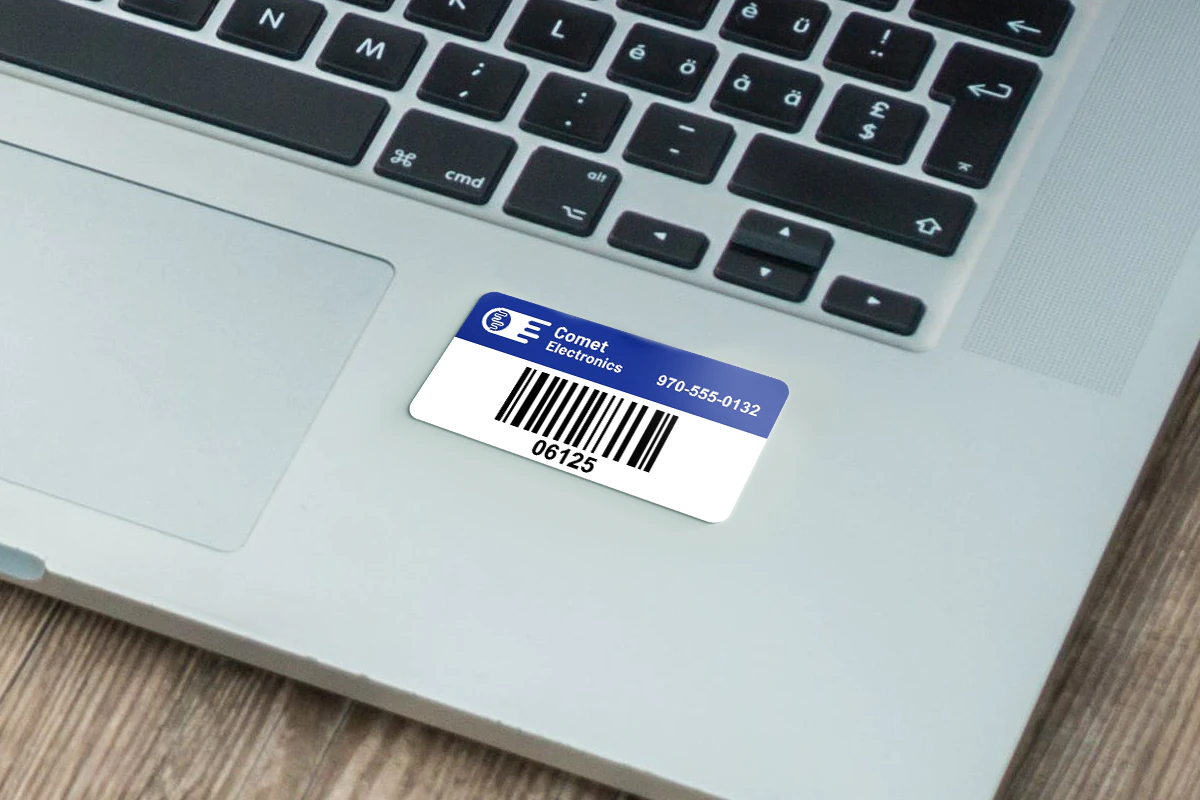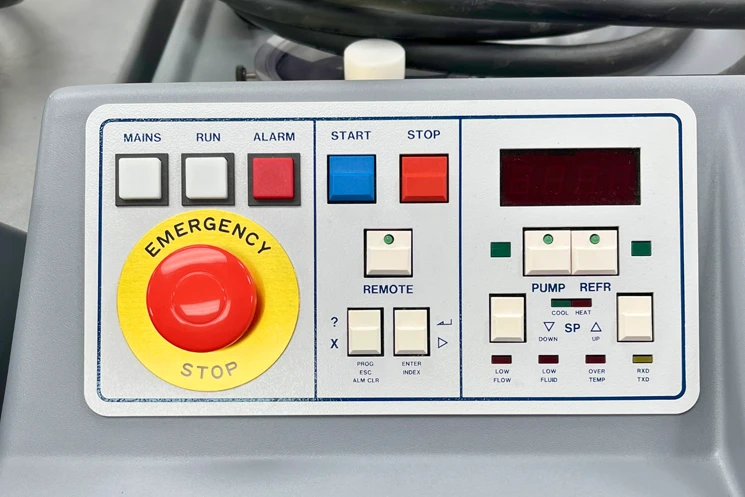Yes! A DAM system depends on a well-structured database to store, organize, and retrieve digital files like images, videos, and documents. The database manages metadata, version control, access permissions, and search functionality, ensuring efficient asset organization. Without a database, digital assets become difficult to track, leading to lost files, inefficiency, and poor asset management.
Additionally, for organizations that also handle physical assets, pairing digital records with printed asset tags can provide an extra layer of organization, ensuring that both digital and physical assets are easy to track and manage.
In this article, we’ll explore how a digital asset management system uses a database, the benefits it provides, and why having a database is essential for DAM systems. We’ll also look at key features that a database brings to DAM software, such as version control, access control, and search functionality.

Why DAM Systems Rely on Databases
A digital asset management system (DAM) is a tool for storing, organizing, and managing a wide variety of digital files, including images, videos, documents, and other media assets. DAM systems are essential for marketing teams, content creators, and brand managers who work with large amounts of digital content.
At the core of any effective DAM system is a well-organized database. This database is where all assets and their metadata are stored, making it possible for users to quickly find, retrieve, and manage files. DAM software typically uses metadata to tag assets with information like file type, date created, and usage rights, which improves the organization and accessibility of assets.
Key Benefits of a Database in Digital Asset Management
A database is essential for a digital asset management software to function effectively. Let’s take a look at some of the main benefits a database brings to DAM systems.
Streamlined Organization and Search Functionality
One of the biggest challenges in managing media assets is finding the right file when you need it. With a database, a DAM platform can offer powerful search functionality that allows users to locate specific assets based on metadata. Users can search by keywords, file types, dates, and other criteria, saving time and avoiding frustration.
For example, if a marketing team is looking for a particular logo, they can easily find it by searching within the DAM platform. This ensures that team members always have quick access to brand assets they need, improving productivity.
Enhanced Version Control and Access Control
When managing a large volume of digital files, version control becomes essential. A database allows DAM systems to track different versions of the same asset, which is crucial for maintaining accurate records and avoiding outdated files.
Version control is especially important for brand management. With a DAM solution, users can keep track of every change made to a file, ensuring that the latest version is always available. This feature is essential for maintaining brand consistency, as it helps prevent accidental use of old or incorrect files.
In addition to version control, databases enable access control. DAM systems can restrict access to certain files based on user roles, ensuring that only authorized individuals can view or edit sensitive assets. This feature is particularly useful for protecting high-quality assets, as well as confidential documents.
Improved Brand Management and Consistency
For companies with strong branding, using a DAM system helps maintain consistency across all channels. By keeping brand assets like logos, templates, and promotional materials in a single, organized system, marketing teams can access the correct files quickly.
A DAM platform with a structured database ensures that all digital content aligns with the company’s brand guidelines. This consistency helps build a cohesive brand image, whether assets are being used on a website, in social media, or on other platforms.
Easy Integration with Physical Asset Management
For organizations that also manage physical assets, DAM systems can integrate digital records with physical asset tags. This combination allows for better asset management across both digital and physical items.
For example, a company that uses printed asset tags on physical assets can link the tags with digital records in the DAM system. This creates a unified asset tracking system for all resources.
Such integration supports inventory management by connecting digital files to physical assets, ensuring that all items, both digital and physical, are easily accessible and properly tracked.
How a Database Supports Core DAM Features
The database in a DAM system is responsible for supporting core features that make digital asset management efficient and user-friendly. Here’s how a well-structured database enables some of the key capabilities of DAM software.
Metadata Storage
Metadata includes information like file name, asset type, creation date, and keywords. The database stores this metadata, making it easy to organize and retrieve assets. For example, QR codes and serial numbers can be linked to assets to allow for faster searches and streamlined asset tagging processes.
Search Functionality
A DAM system’s database powers its search functionality, allowing users to search for specific files by metadata. Advanced search options, such as filters for file types or specific tags, enable users to find exactly what they need. This feature is especially useful for companies with large libraries of digital content.
Access Control
With access control, users can set permissions for different files or folders in the DAM platform. This means sensitive files can only be viewed or edited by authorized users. Access control improves security and ensures that valuable assets remain protected.
Version Control
The database in a DAM solution keeps track of each file version, enabling version control. This feature is critical for teams that frequently update files. It helps users avoid confusion over outdated versions and ensures that everyone is working with the latest file.
The Benefits of Digital Asset Management for Modern Businesses
Using a digital asset management software brings significant advantages to businesses of all sizes. With a DAM system in place, companies can efficiently store, organize, and share digital files, resulting in better brand control and productivity.
Some of the major benefits of digital asset management include:
- Faster Access to Files: With a database and advanced search features, finding assets is quick and easy, saving time for busy teams.
- Improved Collaboration: By keeping assets in a centralized DAM platform, teams can work together more effectively, ensuring that everyone has access to the right files.
- Reduced Errors: Version control and access control prevent mistakes, such as using outdated files or accidentally altering important documents.
- Cost-Effective Storage: A cloud-based DAM solution is scalable, allowing companies to store large volumes of media without high storage costs.

Choosing the Right DAM Solution for Your Needs
Not all DAM systems are the same. When choosing a DAM solution, it’s important to consider your company’s specific needs, such as file types, access requirements, and integration with existing systems. Some DAM platforms offer cloud-based storage, which is ideal for remote teams and allows for easy access from any location.
A few factors to consider when selecting a DAM platform include:
- Compatibility with File Types: Make sure the DAM system can handle a wide range of digital files, from images and videos to documents and presentations.
- Scalability: If your company expects to grow its asset library, consider a DAM software that’s scalable and can grow with you.
- Integration with Existing Systems: Many companies already use systems for asset management and inventory. A good DAM solution should integrate seamlessly with these systems to support both digital and physical assets.
How DAM Systems Support Brand Management and Marketing
One of the key advantages of using a digital asset management system is its support for brand consistency. By keeping all brand assets in a centralized location, companies can maintain a unified brand image across various platforms, including social media.
For marketing teams, a DAM system is essential for organizing digital content and ensuring that the latest versions of promotional materials are available. By streamlining the digital asset management process, teams can work more efficiently and focus on producing high-quality content that resonates with the audience.
Database vs. No Database in DAM Systems
| Feature | DAM System with Database | DAM System without Database |
|---|---|---|
| Search & Retrieval | Fast, indexed search with metadata tags. | Slow, manual search with no structured metadata. |
| Version Control | Tracks changes, stores multiple versions. | No version history, risk of using outdated files. |
| Security & Access | Role-based permissions, audit trails. | Limited or no access control. |
| Scalability | Can manage millions of assets efficiently. | Becomes disorganized with large file volumes. |
Digital Asset Management FAQs
A digital asset management (DAM) system requires a database to store, organize, and retrieve digital assets efficiently. The database manages metadata, versions, access permissions, and relationships between assets. Without a structured database, managing large volumes of files becomes inefficient and unscalable.
A DAM system requires a database to store, retrieve, and organize digital assets efficiently. The database enables metadata management, version control, search indexing, and secure access permissions.
No, a DAM system without a database would struggle with organization, searchability, security, and scalability, leading to inefficiency and lost files.
Relational databases (SQL) are best for structured data and metadata management, while NoSQL databases handle unstructured assets like videos and images. Hybrid cloud-based databases offer the best of both worlds.
Final Thoughts
In conclusion, a digital asset management system needs a well-structured database to organize, store, and retrieve digital files effectively. With features like search functionality, version control, and access control, a database enhances every aspect of DAM, from organizing files to ensuring brand consistency.
For companies that manage both digital and physical assets, a DAM system integrated with asset tagging can simplify tracking across the entire organization. Whether for media assets or brand management, a database-powered DAM solution brings valuable benefits that help companies work smarter and more efficiently.
By choosing the right DAM software, businesses can gain a robust platform for managing digital content and maintaining a strong, consistent brand presence.



